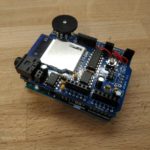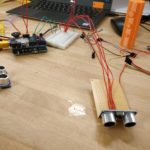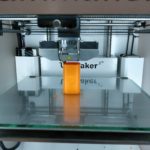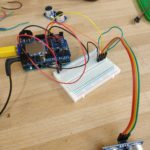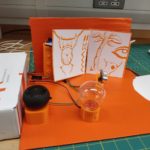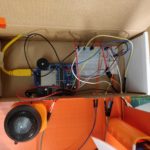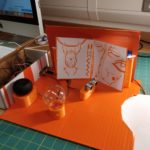A Physical Puzzle Game by George Linfield
Introduction:
For days you have been wandering the desert. Your supplies are running low, and the excitement of discovery and adventure can only fuel you for so long. Then, just as hope begins to fade, you catch sight of an orange glow in the distance.
It can’t be. It must be. The legendary Citrine City, long thought lost to the dunes of the desert. You approach, hoping for nothing more than a meal and a rest.
But the amber glow of this once great city, now dilapidated and empty, masks a secret. One last treasure that the city still hides. Can you solve the puzzles and unlock the secret of Citrine City?
Description:
Inspired by 80s and 90s game shows, The Jewels of Citrine City is a riddle-based puzzle game that takes place in a 3D tabletop space. You are a traveller who has stumbled upon Citrine City, a once majestic town carved out of orange brick and gemstone, now reduced to a dilapidated and empty ruin. There is a hidden treasure in the city, and only by solving the puzzles set out by Marvellous, the mysterious guardian of the city, will you be able to take it.
I've long had a desire to design an escape room, and it was this motivation that led me to explore the idea of creating an escape room that could be set-up and played on the tabletop. I think this strikes a happy medium between the physicality of space (and potential for puzzling) that escape room's provide, and the ease and accessibility of tabletop games.
My initial concept was for an audio system that output clues and respond to a players' answers, but a desire to make the game more physical led me to create objects that used sensors to trigger answers for the clues. I elected to use riddles for the basis of the puzzles as this meant that the player had to both answer the riddle, and then work out which interaction the riddle was referring to.
Further Development:
In the end I was quite pleased with how the game turned out. Players found it satisfying when their riddle answers triggered the opening of the servo-powered gates, and the audio clues hit the cheesy 90s gameshow tone that I was going for.
The obvious further development would be for a greater number of puzzles, with more objects that the player can interact with. Unfortunately with the limited time I had at my disposal I could only create three puzzles, and I think this contributed to the game being quite easy - players could just guess which interactions each object required because of the lack of options.
I would also like to add further polish to the board and the pieces. I didn't have time to 3D print absolutely everything I wanted to, as you can probably see from the cardboard box case that I had to use in the end. Building a proper cabinet to contain everything would be a really cool stretch-goal.
Additional Documentation and Photography:
Link to high quality gameplay example.
Photos:

